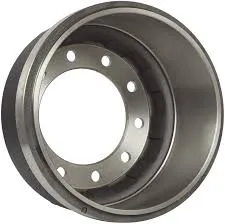
-
 Afrikaans
Afrikaans -
 Albanian
Albanian -
 Amharic
Amharic -
 Arabic
Arabic -
 Armenian
Armenian -
 Azerbaijani
Azerbaijani -
 Basque
Basque -
 Belarusian
Belarusian -
 Bengali
Bengali -
 Bosnian
Bosnian -
 Bulgarian
Bulgarian -
 Catalan
Catalan -
 Cebuano
Cebuano -
 Corsican
Corsican -
 Croatian
Croatian -
 Czech
Czech -
 Danish
Danish -
 Dutch
Dutch -
 ئىنگىلىزچە
ئىنگىلىزچە -
 Esperanto
Esperanto -
 Estonian
Estonian -
 Finnish
Finnish -
 French
French -
 Frisian
Frisian -
 Galician
Galician -
 Georgian
Georgian -
 German
German -
 Greek
Greek -
 Gujarati
Gujarati -
 Haitian Creole
Haitian Creole -
 hausa
hausa -
 hawaiian
hawaiian -
 Hebrew
Hebrew -
 Hindi
Hindi -
 Miao
Miao -
 Hungarian
Hungarian -
 Icelandic
Icelandic -
 igbo
igbo -
 Indonesian
Indonesian -
 irish
irish -
 Italian
Italian -
 Japanese
Japanese -
 Javanese
Javanese -
 Kannada
Kannada -
 kazakh
kazakh -
 Khmer
Khmer -
 Rwandese
Rwandese -
 Korean
Korean -
 Kurdish
Kurdish -
 Kyrgyz
Kyrgyz -
 Lao
Lao -
 Latin
Latin -
 Latvian
Latvian -
 Lithuanian
Lithuanian -
 Luxembourgish
Luxembourgish -
 Macedonian
Macedonian -
 Malgashi
Malgashi -
 Malay
Malay -
 Malayalam
Malayalam -
 Maltese
Maltese -
 Maori
Maori -
 Marathi
Marathi -
 Mongolian
Mongolian -
 Myanmar
Myanmar -
 Nepali
Nepali -
 Norwegian
Norwegian -
 Norwegian
Norwegian -
 Occitan
Occitan -
 Pashto
Pashto -
 Persian
Persian -
 Polish
Polish -
 Portuguese
Portuguese -
 Punjabi
Punjabi -
 Romanian
Romanian -
 Russian
Russian -
 Samoan
Samoan -
 Scottish Gaelic
Scottish Gaelic -
 Serbian
Serbian -
 Sesotho
Sesotho -
 Shona
Shona -
 Sindhi
Sindhi -
 Sinhala
Sinhala -
 Slovak
Slovak -
 Slovenian
Slovenian -
 Somali
Somali -
 Spanish
Spanish -
 Sundanese
Sundanese -
 Swahili
Swahili -
 Swedish
Swedish -
 Tagalog
Tagalog -
 Tajik
Tajik -
 Tamil
Tamil -
 Tatar
Tatar -
 Telugu
Telugu -
 Thai
Thai -
 Turkish
Turkish -
 Turkmen
Turkmen -
 Ukrainian
Ukrainian -
 Urdu
Urdu -
 Uighur
Uighur -
 Uzbek
Uzbek -
 Vietnamese
Vietnamese -
 Welsh
Welsh -
 Bantu
Bantu -
 Yiddish
Yiddish -
 Yoruba
Yoruba -
 Zulu
Zulu
brake drum dust
Understanding Brake Drum Dust Causes, Effects, and Solutions
Brake drum dust is an often-overlooked component of vehicle maintenance, yet it plays a significant role in the overall safety and efficiency of the braking system. When discussing brake systems, most people tend to focus on the brake pads and rotors, but the dust produced by brake drums deserves attention as well. This article aims to shed light on what brake drum dust is, why it forms, and how to manage it effectively.
What is Brake Drum Dust?
Brake drum dust refers to the fine particulate matter that is generated when the braking system is engaged. This dust is primarily composed of the material worn off brake shoes, which are used in drum brake systems that are common in many vehicles, especially older models and some trucks. The friction created when the brake shoes press against the drum generates heat and, consequently, wear, releasing tiny particles into the environment.
Causes of Brake Drum Dust
The generation of brake drum dust can be attributed to several factors. The most significant cause is the friction between the brake shoes and the drum when the brakes are applied. The wear and tear on the brake components result in the shedding of material, which contributes to dust accumulation. Additionally, factors such as driving habits (frequent hard braking), the type of brake shoe material (organic, metallic, or ceramic), and the quality of the brake drum can influence the amount of dust produced.
Effects of Brake Drum Dust
brake drum dust

The accumulation of brake drum dust can have several adverse effects, both for the vehicle and the environment. For the vehicle itself, excessive dust can lead to contamination of other components, such as the wheel bearings and suspension, potentially causing premature wear and diminished performance. Furthermore, brake dust can attract moisture, leading to rust and corrosion of brake components.
From an environmental perspective, brake dust can contribute to air quality issues. The fine particles can become airborne, and if inhaled, pose health risks to individuals in close proximity to heavy traffic or during vehicle maintenance. For instance, brake dust is a component of particulate matter (PM) that can lead to respiratory problems if accumulated in significant quantities.
Solutions and Preventative Measures
To mitigate the issues associated with brake drum dust, regular vehicle maintenance is essential. This includes timely inspections and replacements of brake shoes and drums, as well as cleaning the wheel wells and related components to remove accumulated dust.
Moreover, many manufacturers are now producing low-dust brake pads and shoes designed to minimize particulate emissions. Opting for these advanced materials can significantly reduce the amount of brake dust generated. Additionally, educating drivers on smooth braking techniques can also help decrease dust production by reducing the friction and heat generated during braking.
In conclusion, while brake drum dust may often be considered a minor issue in the grand scheme of vehicle maintenance, its implications are far from insignificant. By understanding its causes, effects, and implementing effective management strategies, vehicle owners can enhance safety, prolong the life of their braking systems, and contribute to a healthier environment. Regular maintenance and informed choices are the best ways to combat the issues associated with brake drum dust.
-
Rear Drum Brakes Maintenance TipsخەۋەرلەرAug.04,2025
-
Key Components Affecting Brake Drum FunctionخەۋەرلەرAug.04,2025
-
Important Inspection for Truck Drum BrakeخەۋەرلەرAug.04,2025
-
How to Prepare for Changing Rear Drum BrakesخەۋەرلەرAug.04,2025
-
Essential Tools for Cleaning Drum Brakes ProperlyخەۋەرلەرAug.04,2025
-
Brake Drum Function GuideخەۋەرلەرAug.04,2025
-
Safety Features of Red Brake DrumsخەۋەرلەرAug.01,2025
